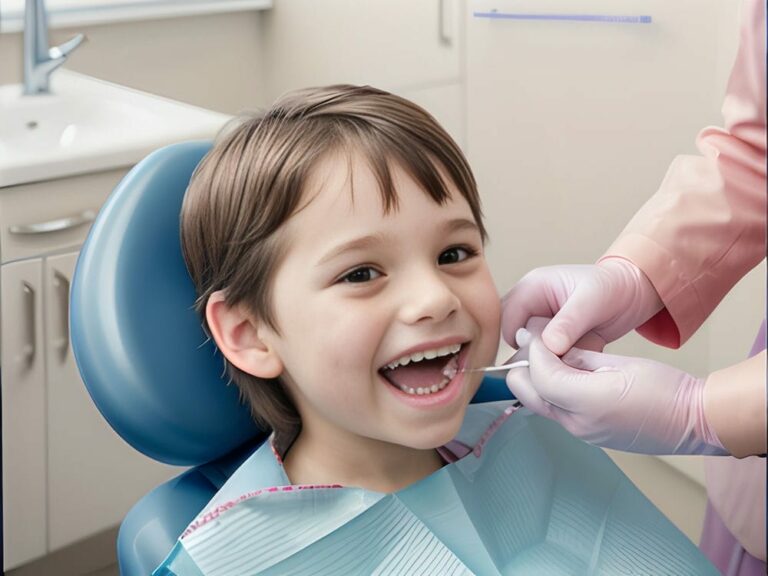Understanding Language Barriers: Overcoming Miscommunication in Healthcare Settings
Understanding Language Barriers: Overcoming Miscommunication in Healthcare Settings
Effective communication is a fundamental aspect of providing quality healthcare. However, language barriers can often hinder the delivery of patient care and lead to miscommunication between healthcare providers and patients. Understanding the impact of language barriers on patient communication is crucial for healthcare professionals to provide culturally competent care.
Language barriers can arise when patients and healthcare providers do not share a common language. This can make it difficult for patients to accurately convey their symptoms or understand medical instructions. Miscommunication due to language barriers can have serious consequences, such as medication errors, incorrect diagnoses, and misunderstandings about treatment plans. It is essential for healthcare professionals to recognize these barriers and take steps to overcome them.
Adapting communication strategies is key to overcoming language barriers in healthcare settings. Healthcare professionals should be proactive in seeking out interpreters or translation services to facilitate effective communication with non-English speaking patients. Utilizing professional interpreters ensures accurate interpretation of medical information and maintains patient confidentiality. Additionally, using visual aids, such as pictures or diagrams, can help enhance understanding for patients with limited English proficiency.
In a multicultural society, it is imperative for healthcare professionals to enhance their cultural competence and understanding of diverse languages spoken by their patients. By recognizing the challenges posed by language barriers and adapting communication strategies accordingly, healthcare providers can ensure that all patients receive the care they need regardless of their linguistic background.
The Role of Cultural Competence in Enhancing Patient Communication
Effective patient communication is a crucial aspect of providing quality healthcare. Healthcare professionals must strive to understand and overcome language barriers in order to effectively communicate with patients from diverse linguistic backgrounds. By enhancing their cultural competence and adapting communication strategies, healthcare providers can ensure that all patients receive the care they need.
Firstly, healthcare professionals should approach patient communication with empathy and respect. They should understand that language barriers can be frustrating and intimidating for patients. By showing empathy towards their struggles and respecting their cultural differences, healthcare providers can create a safe and welcoming environment where patients feel comfortable expressing themselves.
Secondly, healthcare professionals should continually work on enhancing their cultural competence. This involves understanding the cultural norms, beliefs, and values of different linguistic communities. By familiarizing themselves with the languages spoken by their patients, healthcare providers can better understand their unique needs and tailor their communication accordingly.
Lastly, healthcare professionals should utilize appropriate communication strategies to overcome language barriers. This may involve using interpreters or translation services to ensure accurate interpretation of medical information. Visual aids such as pictures or diagrams can also help enhance understanding for patients with limited English proficiency.
In summary, effective patient communication in the presence of language barriers requires healthcare professionals to approach interactions with empathy and respect while continuously working on enhancing cultural competence. By adapting communication strategies to meet the specific needs of non-English speaking patients, healthcare providers can ensure that all individuals receive the care they deserve regardless of their linguistic background.
Promoting Diversity and Inclusion in Healthcare Practices for Effective Communication
Promoting diversity and inclusion in healthcare practices is crucial for effective patient communication. By creating an inclusive environment, healthcare professionals can ensure that individuals from all cultural backgrounds feel valued and heard. This begins with raising awareness about the importance of cultural competence and the impact it has on patient care.
One way to promote inclusion is by providing interpretation services for patients who have limited English proficiency. By having qualified interpreters available, healthcare providers can bridge the language gap and ensure accurate communication between themselves and their patients. This not only improves patient understanding but also helps to build trust and rapport.
In addition to interpretation services, healthcare professionals should strive to be culturally sensitive in their interactions. This involves recognizing and respecting the unique beliefs, values, and traditions of different cultures. By incorporating these elements into their practice, healthcare providers can foster a sense of belonging for patients from diverse backgrounds.
By promoting diversity and inclusion in healthcare practices through increased awareness and the use of interpretation services, healthcare professionals can enhance patient communication. This creates a more equitable healthcare system where every individual feels understood and can actively participate in their own care.
Developing Cultural Sensitivity Skills to Improve Patient Engagement
Developing cultural sensitivity skills is essential for healthcare professionals to improve patient engagement. One way to enhance these skills is through language translation services. By providing translated materials and resources, healthcare providers can ensure that patients from different cultural backgrounds have access to the information they need in a language they understand. This promotes clear communication and empowers patients to actively participate in their own care.
Collaboration is another key aspect of developing cultural sensitivity skills. Healthcare professionals should work together with interpreters, cultural liaisons, and community organizations to better understand the needs of diverse patient populations. By collaborating with these individuals and groups, healthcare providers can gain valuable insights into different cultures and tailor their communication strategies accordingly. This collaborative approach fosters a more inclusive and patient-centered healthcare environment.
To effectively develop cultural sensitivity skills, healthcare professionals should undergo training programs that focus on diversity and inclusion. These programs can provide education on cultural competence, unconscious biases, and effective communication techniques with diverse patients. By investing in this training, healthcare providers can improve their understanding of different cultures and become more adept at navigating cross-cultural interactions. This ultimately leads to improved patient engagement and outcomes.
By incorporating language translation services, promoting collaboration, and undergoing cultural sensitivity training, healthcare professionals can enhance their skills in engaging with patients from diverse backgrounds. This not only improves patient communication but also demonstrates a commitment to providing equitable care for all individuals.
Addressing Language Barriers: Strategies for Effective Communication with Limited English Proficiency Patients
Developing cultural sensitivity skills is crucial for healthcare professionals to effectively engage with patients from diverse backgrounds. One way to enhance these skills is by utilizing language translation services, which ensure that information is accessible to patients in their preferred language. This promotes clear communication and empowers patients to actively participate in their own care. Another important aspect of developing cultural sensitivity skills is collaboration. By working together with interpreters, cultural liaisons, and community organizations, healthcare providers can gain valuable insights into different cultures and tailor their communication strategies accordingly. This collaborative approach fosters a more inclusive and patient-centered healthcare environment.
To effectively develop cultural sensitivity skills, healthcare professionals should undergo training programs that focus on diversity and inclusion. These programs provide education on cultural competence, unconscious biases, and effective communication techniques with diverse patients. By investing in this training, healthcare providers can improve their understanding of different cultures and become more skilled at navigating cross-cultural interactions. This ultimately leads to improved patient engagement and outcomes.
By incorporating language translation services, promoting collaboration, and undergoing cultural sensitivity training, healthcare professionals can bridge the gap between different cultures and enhance their ability to communicate with patients from diverse backgrounds. This not only improves patient communication but also demonstrates a commitment to providing culturally appropriate and equitable care for all individuals.
Utilizing Interpreter Services to Bridge the Gap in Language and Culture
Developing effective communication skills is essential for healthcare professionals to provide patient-centered care and address health disparities. One key aspect of effective communication is cultural competence, which involves understanding and respecting the beliefs, values, and practices of patients from diverse backgrounds. By incorporating cultural sensitivity into their communication strategies, healthcare providers can bridge the gap between different cultures and enhance their ability to connect with patients.
To begin enhancing patient communication through cultural competence, healthcare professionals should prioritize language access. Language translation services play a crucial role in ensuring that patients with limited English proficiency can understand and actively participate in their own care. By utilizing interpreters or translation devices, healthcare providers can overcome language barriers and promote clear communication. This not only helps patients feel more involved in their healthcare decisions but also reduces the risk of miscommunication and medical errors.
In addition to language access, collaborating with interpreters, cultural liaisons, and community organizations is another important strategy for enhancing patient communication. These individuals and groups have valuable insights into different cultures and can help healthcare providers tailor their communication approaches accordingly. By working together as a team, healthcare professionals can better understand the unique needs of each patient and develop culturally appropriate care plans. This collaborative approach fosters a more inclusive healthcare environment where all patients feel heard, respected, and empowered.
By incorporating language translation services, promoting collaboration with interpreters and community organizations, and undergoing cultural sensitivity training, healthcare professionals can enhance their ability to communicate effectively with patients from diverse backgrounds. This not only improves patient engagement but also reduces health disparities by ensuring that all individuals receive culturally appropriate care. Ultimately, by prioritizing cultural competence in their practice, healthcare providers demonstrate a commitment to equitable care for all patients.
Next Section H2: Utilizing Interpreter Services to Bridge the Gap in Language and Culture
Enhancing Patient Communication through Cross-Cultural Training for Healthcare Professionals
Enhancing Patient Communication through Cross-Cultural Training for Healthcare Professionals
Cultural sensitivity is a key component of effective communication in healthcare settings. To further improve patient communication, healthcare professionals can benefit from cross-cultural training. This type of training equips them with the knowledge and skills necessary to understand and navigate different cultural norms, beliefs, and practices.
One aspect of cross-cultural training involves developing an awareness of one’s own cultural biases and assumptions. By recognizing and reflecting on their own cultural upbringing, healthcare professionals can better understand how their own perspectives may influence their interactions with patients from diverse backgrounds. This self-awareness helps to prevent misunderstandings or unintentional offense.
Another important aspect of cross-cultural training is learning about specific cultural practices and beliefs that may impact healthcare decisions. For example, understanding the role of family dynamics or traditional healing practices in certain cultures can help healthcare providers tailor their approach to better meet the needs and preferences of their patients. By demonstrating respect for patients’ cultural values, healthcare professionals can build trust and establish a strong therapeutic alliance.
In conclusion, by undergoing cross-cultural training, healthcare professionals can enhance their ability to communicate effectively with patients from diverse backgrounds. This type of training promotes cultural sensitivity, language access, and intercultural collaboration – all essential components for providing patient-centered care. By incorporating these strategies into their practice, healthcare providers demonstrate a commitment to delivering equitable care that respects the unique needs and values of each individual patient.
Recognizing Non-Verbal Communication Cues in Culturally Diverse Patients
The next section focuses on recognizing non-verbal communication cues in culturally diverse patients. This skill is essential for healthcare professionals to effectively communicate with patients who may express themselves differently than what is considered the norm in their own culture. Non-verbal cues such as body language, facial expressions, and gestures can provide valuable insights into a patient’s emotions, needs, and level of comfort.
It is important for healthcare professionals to be aware that non-verbal cues may vary across different cultures. For example, eye contact, which is often seen as a sign of respect and attentiveness in Western cultures, may be interpreted differently in other cultures. Some individuals may find direct eye contact disrespectful or intrusive. By understanding these cultural differences, healthcare professionals can avoid misinterpretation and adapt their communication style accordingly.
Additionally, being mindful of non-verbal cues can also help healthcare professionals identify potential barriers or challenges in patient communication. For instance, a patient from a culture that values personal space might exhibit signs of discomfort if a healthcare provider stands too close during a conversation or physical examination. Recognizing these cues allows healthcare professionals to make necessary adjustments to ensure the patient feels respected and comfortable throughout their interaction.
Overall, by recognizing and interpreting non-verbal communication cues in culturally diverse patients, healthcare professionals can enhance their ability to understand and respond effectively to their patients’ needs. This skill promotes cultural competence and fosters stronger patient-provider relationships based on trust and mutual understanding. In the next section, we will explore strategies for improving cross-cultural communication skills through active listening techniques.
Navigating Cultural Differences: Tips for Building Trust and Rapport with Patients from Different Backgrounds
The next section focuses on recognizing non-verbal communication cues in culturally diverse patients. This skill is essential for healthcare professionals to effectively communicate with patients who may express themselves differently than what is considered the norm in their own culture. Non-verbal cues such as body language, facial expressions, and gestures can provide valuable insights into a patient’s emotions, needs, and level of comfort.
It is important for healthcare professionals to be aware that non-verbal cues may vary across different cultures. For example, eye contact, which is often seen as a sign of respect and attentiveness in Western cultures, may be interpreted differently in other cultures. Some individuals may find direct eye contact disrespectful or intrusive. By understanding these cultural differences, healthcare professionals can avoid misinterpretation and adapt their communication style accordingly.
Additionally, being mindful of non-verbal cues can also help healthcare professionals identify potential barriers or challenges in patient communication. For instance, a patient from a culture that values personal space might exhibit signs of discomfort if a healthcare provider stands too close during a conversation or physical examination. Recognizing these cues allows healthcare professionals to make necessary adjustments to ensure the patient feels respected and comfortable throughout their interaction.
Overall, by recognizing and interpreting non-verbal communication cues in culturally diverse patients, healthcare professionals can enhance their ability to understand and respond effectively to their patients’ needs. This skill promotes cultural competence and fosters stronger patient-provider relationships based on trust and mutual understanding. In the next section, we will explore strategies for improving cross-cultural communication skills through active listening techniques.
Creating a Culturally Responsive Healthcare Environment for Effective Patient-Provider Communication
The ability to recognize and interpret non-verbal communication cues is essential for healthcare professionals to effectively communicate with culturally diverse patients. Non-verbal cues such as body language, facial expressions, and gestures can provide valuable insights into a patient’s emotions, needs, and level of comfort. However, it is important to be aware that these cues may vary across different cultures.
For example, eye contact, which is often seen as a sign of respect and attentiveness in Western cultures, may be interpreted differently in other cultures. Some individuals may find direct eye contact disrespectful or intrusive. By understanding these cultural differences, healthcare professionals can avoid misinterpretation and adapt their communication style accordingly.
Being mindful of non-verbal cues can also help healthcare professionals identify potential barriers or challenges in patient communication. For instance, a patient from a culture that values personal space might exhibit signs of discomfort if a healthcare provider stands too close during a conversation or physical examination. Recognizing these cues allows healthcare professionals to make necessary adjustments to ensure the patient feels respected and comfortable throughout their interaction.
By recognizing and interpreting non-verbal communication cues in culturally diverse patients, healthcare professionals can enhance their ability to understand and respond effectively to their patients’ needs. This skill promotes cultural competence and fosters stronger patient-provider relationships based on trust and mutual understanding. In the next section, we will explore strategies for improving cross-cultural communication skills through active listening techniques.
FAQs
Q: What is cultural competence in the context of patient communication?,
A: Cultural competence refers to the ability of healthcare professionals to effectively communicate with patients from diverse cultural backgrounds.,
Q: Why is cultural competence important in patient communication?,
A: Cultural competence is important because it allows healthcare professionals to understand and respect the cultural beliefs, values, and practices of their patients, leading to more effective and patient-centered care.,
Q: How can healthcare professionals enhance their cultural competence?,
A: Healthcare professionals can enhance their cultural competence by educating themselves about different cultures, being open-minded and non-judgmental, and actively listening to their patients’ concerns and needs.,
Q: What are some common barriers to effective patient communication related to cultural differences?,
A: Some common barriers include language barriers, differences in health beliefs and practices, and lack of awareness or understanding of cultural norms.,
Q: How can healthcare professionals overcome language barriers in patient communication?,
A: Healthcare professionals can overcome language barriers by using professional interpreters or translation services, providing written materials in multiple languages, or utilizing visual aids and gestures to enhance understanding.,
Q: How can healthcare professionals demonstrate cultural sensitivity in patient communication?,
A: Healthcare professionals can demonstrate cultural sensitivity by respecting and valuing their patients’ cultural beliefs, avoiding assumptions or stereotypes, and adapting their communication style to meet the patient’s cultural preferences.,
Q: What are some strategies for building trust and rapport with patients from different cultures?,
A: Building trust and rapport can be achieved by showing empathy and understanding, providing clear and concise information, involving patients in decision-making, and addressing any concerns or questions they may have.,
Q: How can healthcare professionals address cultural differences in health beliefs and practices?,
A: Healthcare professionals can address cultural differences by asking open-ended questions, seeking to understand the patient’s perspective, and finding common ground to create a mutually agreed-upon plan of care.,
Q: What role does nonverbal communication play in cultural competence?,
A: Nonverbal communication, such as body language and facial expressions, can greatly impact patient communication. Being aware of cultural variations in nonverbal cues and adjusting one’s own nonverbal behavior can improve understanding and trust.,
Q: How can healthcare organizations promote cultural competence among their staff?,
A: Healthcare organizations can promote cultural competence by providing training and education on cultural awareness and sensitivity, fostering a supportive and inclusive work environment, and implementing policies that prioritize patient-centered care.


















